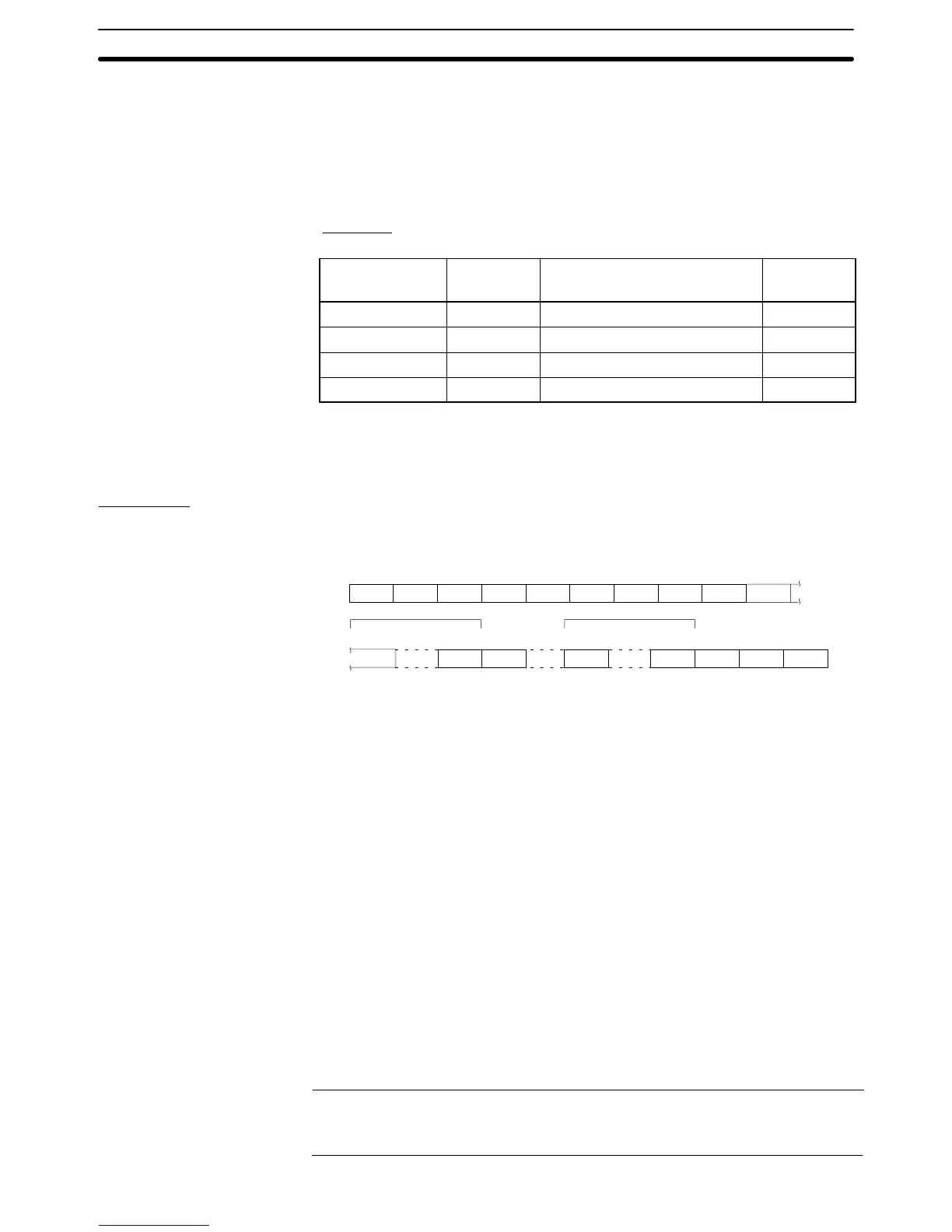4-3SectionCommands/Responses
382
• AND attribute: The result after executing the AND operation on the present
data of the PT and the written data is written.
• OR attribute: The result after executing the OR operation on the present
data of the PT and the written data is written.
• XOR attribute: The result after executing the XOR operation on the present
data of the PT and the written data is written.
Example:
Write attribute Written
data
Present data of the PT
memory
Result
SET attribute 1234
H
3456
H
1234
H
AND attribute 1234
H
3456
H
1014
H
OR attribute 1234
H
3456
H
3676
H
XOR attribute 1234
H
3456
H
2662
H
4-3-8 Numeral Memory Table Write Command (Sent from Host to PT)
Command
Format
Data of 1 word
Data of 1 word
m
1B 57
[ESC] W
t3 t4
4E
Nt1 (l1) (l2)t2
2C 0D
d11 d1m
,
dn1
dnm
(s1) (s2) [CR]
* * * * * * * * * * * * * *
* * * * * * * * * * * *
m: Checksum present/absent (1 BCD digit)
0: Absent
1: Present
8: Absent (only 1 table entry written)
9: Present (only 1 table entry written)
t
1
to t
4
: First numeral memory number written to (4 BCD digits)
0000 to 1999 (excluding 0247 to 0253)
l
1
, l
2
: Number of written table entries (2 BCD digits)
01 to 20:1 to 20 table entries
When m is 8 or 9, omit this setting.
d1
1
to d1
m
, ..., dn
1
to dn
m
:
Contents of the written numeral memory table entries (1 to 8
hexadecimal digits)
0 to FFFFFFFF
H
It is possible to omit initial zeroes so that there are less than 8
digits.
s
1
, s
2
: Checksum (2 hexadecimal digits)
When m is 0 or 8, omit this setting.
Reference: The maximum number that can be specified for numeral memory table entries
depends on the setting for numbers of numeral table entries (512/1000/2000)
made at the Support Tool.
